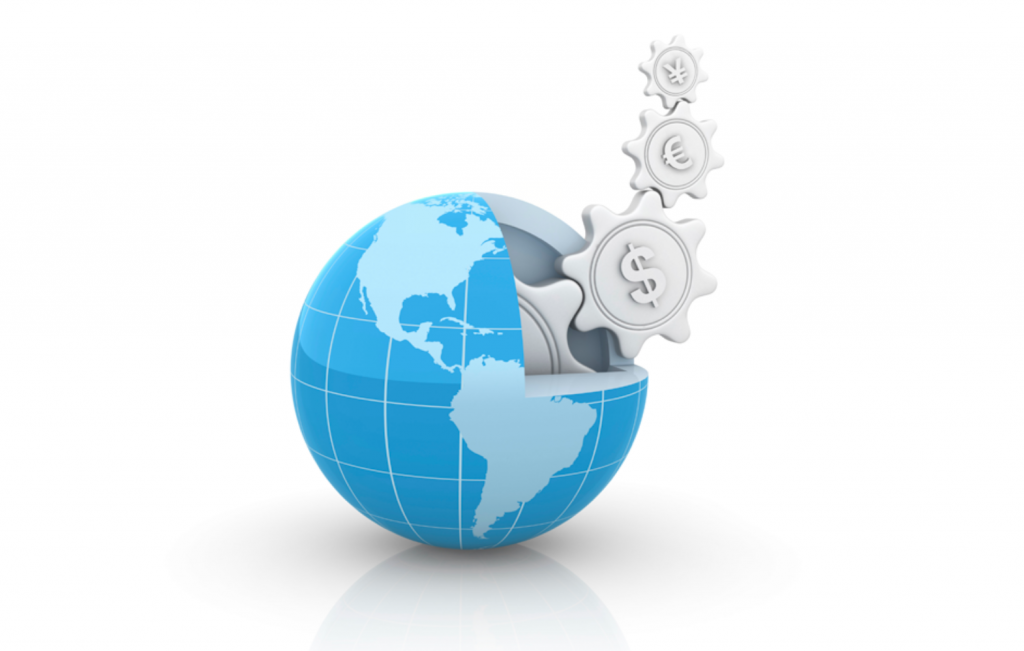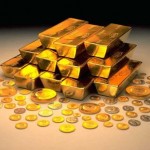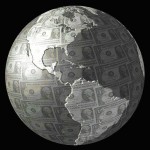What is Forex?
Forex is the largest and most liquid financial market in the world; the average trade consists of trillions per day.
The foreign exchange (Forex) is a market where traders buy, sell, exchange and speculate on currencies. It consists of trading currency for another.
What do you trade?
Learn How to Trade Gold and other precious metals
Example of Trading Currency for another
EUR/USD. This means we trade Euro against the US dollar.
In the Forex Market, You Sell or Buy currencies.
You are exchanging one currency for another in the expectation that the price will change, so that the currency you bought will increase in value compared to the one you sold.
Example of Making Money by Buying Euros:
You purchase 10,000 Euros at the EUR/USD exchange rate of 1.40
Two weeks later, you exchange your 10,000 Euros back to US dollars at the exchange rate of 1.47
EUR 10,000 x 1.40=14,000
EURO 10,000x 1.47= 14,700
You earn a profit of $700
An exchange rate is the ratio of one currency valued against another currency.
All Forex quotes include a two way price, Bid and Ask.
The Bid is always lower than the Ask price.
Currencies that are traded against the US dollar are called majors and make up the greatest number of foreign currency trades.
USD (US DOLLAR)
EUR (EURO)
GBP (British pound)
JPY (JAPANESE YEN)
CHF (SWISS FRANC)
AUD (AUSTRALAIAN DOLLAR)
CAD (CANADIAN DOLLAR)
Currencies that are traded against each other excluding the US dollar are called crosses:
CADJPY/EURAUD/GBPCHF………
When trading Forex, whether major or crosses, the first currency is called base currency and the second currency is called counter currency.
Currencies are quoted in pairs, such as EUR/USD OR GBP/USD (you are buying one and selling another).
Example: EUR/USD =1.4900
the first currency to the left is the base currency (the base currency is the basis for the buy or the sell)
If you buy EUR/USD this means you are buying base currency and selling the quote currency.
You buy the pair if you believe the base currency will go up relative to the quote currency.
You sell the pair if you believe the base currency will go down relative to the quote currency.
Generally 100,000 units of the base currency e.g. the pip value is $10 for EUR/USD.
Trading with mini lot sizes, generally 10,000 units of the base currency. E.g. the pip value is $1 for EUR/USD.
Micro Account
trading with micro lot sizes, generally 1,000 units of the base currency. E.g. the pip value is $0.10 for EUR/USD.
Lot is the standard unit of a transaction. One standard Lot is equal to 100,000 units of the base currency, 10,000 units if it’s a mini, or 1,000 units if it’s micro. Some dealers offer the ability to trade in any unit size, down to as little as 1 unit.
Spread is the difference between buying price and selling price (bid and ask)
The Bid price is the selling price
The Ask price is the buying price.
The difference between Bid and Ask price is called SPREAD and varies for each instrument traded.
A pip is the last number to the right in a currency. A pip is the smallest price change a currency pair can make.
For example: If the EUR/USD traded at 1.1335 today. The “5” is the pip. If it moved to 1.1535, that would be a 200 pip move.
The majority of currency pairs are priced with 4 decimal places except the USD/JPY pair is quoted to 2 decimal places (i.e. 108.84)
A “long” position is a market position where client buys a financial instrument with the intent to sell it at a later stage, at a higher price. (Long means buying the base currency and selling the quote currency)
A “short” position or going short is a market position where a client sells a financial instrument with the intent to buy it at a later stage, at a low price. (Going short or selling means selling the base currency and buying the quote currency)
Margin is the deposit required to open or maintain a position.
Margin can be “Free” (is the amount available to open new positions)
Margin can be “Used” (is the amount being used to maintain an open position)
with a $1,000 margin balance in your account and a 1% margin requirement to open a position, you can buy or sell a position worth up to $100,000.
This allows a trader to leverage his account by up to 100 times or leverage ratio of 100:1.
If a trader account falls below the minimum amount required to maintain an open position, he will receive a “margin call” requiring him to add money or to close the open position.
It is simple concept. If you have $10,000 to trade with, your forex broker will let you borrow money from him so that you can trade in larger quantities. They will let you borrow as much as 400 times (400:1) what you put up in a trade. Most brokers allow 50:1 and 100:1 margin. If you put up $1,000, and your broker allows 100:1 margin then you will be trading $100,000 worth of currency instead of $1,000.
That’s important because every pip equals a certain dollar amount. When you trade $10,000, each pip movement equals $1.
Amount traded $10,000 each pip movement equals $1
Amount traded $50,000 each pip movement equals $ 5
Amount traded $100,000 each pip movement equals $10
$500,000 each pip movement equals…………… … $50
$5,000,000 each pip movement equals………………. $500
A spread is the difference between the bid and the ask price.
The Bid price is the price at which you may sell your currency pair for.
The Ask price is the price at which you must buy the currency pair.
The ask price is always higher than the bid price.
Profits in the market are made from charging the ask price for a currency pair and buying it from someone else at the bid price.
A Stop is placed so you don’t lose too much money.
For example if you bought EUR/USD at 1.1455, I would start losing if it started moving down. I might set a STOP at 1.1435- if the currency drops to that level the system automatically exits the trade.
A LIMIT works the same way, only for gains. I set my limit at 1.1545
if the currency moves up to 1.1545 the system automatically exits the trade and makes money. This can happen whether I am present or not.
Additional orders used:
GFD (Good for day) Order- This order stays open until the end of the day, typically 5:00 pm EST (check with your broker to be sure)
GTC (Good Till Cancelled) – It stays open until you cancel it.
OCO (Orders Cancel Other) lets the trader place a stop loss and profit limit order. Once one is triggered, the other order is canceled.
The Forex Market is unique from stocks and futures; it is open 24 hours a day. Regardless of where you live in the world the market will be open and you can trade anytime.
The trading begins once the markets are officially open in Tokyo, Japan at 7:00 PM Sunday, New York time.
Afterwards, at 9:00 PM EST, Singapore and Hong Kong opens followed by the European markets in Frankfurt at 2:00 AM and London at 3:00 AM.
When time reaches 4:00 AM, the European market is in hot spot and Asia just concluded its trading day.
Around 8:00 AM on Monday, the US markets opens in New York while Europe is slowly going down. Australia will take the lead around 5:00 PM and when it is 7:00PM again, Tokyo is ready to reopen.
Editor’s Note: This post was originally in 2011 and has been completely updated for accuracy and new comprehensiveness





